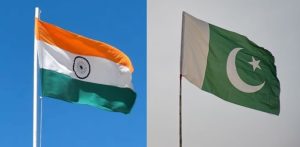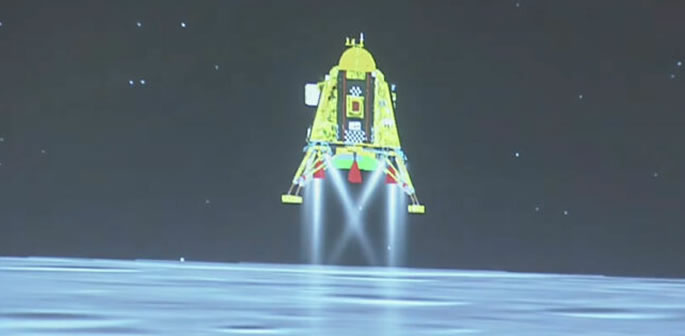"This success belongs to all of humanity"
India’s Chandrayaan-3 spacecraft made history by becoming the fourth nation to land on the moon.
Only the United States, China and the former Soviet Union have completed soft landings on the lunar surface.
Chandrayaan-3’s landing site is also closer to the moon’s south pole than any other spacecraft in history.
The south pole region is considered an area of key scientific and strategic interest for spacefaring nations because scientists believe it is home to water ice deposits.
The water, frozen in shadowy craters, could be converted into rocket fuel or even drinking water for future crewed missions.
The achievement comes just days after a Russian attempt ended in a crash.
Prime Minister Narendra Modi watched the landing virtually and said:
“On this momentous occasion…I would like to address all the people of the world.
“This success belongs to all of humanity, and it will help moon missions by other countries in the future.”
As Chandrayaan-3 approached the moon, its cameras captured photographs.
India’s lunar lander consists of three parts: a lander, rover and propulsion module, which so far has provided the spacecraft with all the thrust required to traverse the 238,855-mile void between the moon and Earth.
Called the Vikram Lander, it completed the precision manoeuvres required to make a soft touchdown on the moon after it was ejected from the propulsion module.
Tucked inside is the six-wheeled rover Pragyan, which will deploy from the lander by rolling down a ramp.
The lander and rover are packed with scientific instruments, prepared to capture data to help researchers analyse the lunar surface and deliver fresh insights into its composition.
Dr Angela Marusiak, an assistant research professor at the University of Arizona’s Lunar and Planetary Laboratory, said she’s particularly excited that the lunar lander includes a seismometer that will attempt to detect quakes within the moon’s interior.
She said that by studying the moon’s inner layers, it could provide key information for future endeavours on the moon.
Dr Marusiak said: “You want to make sure that any potential seismic activity wouldn’t endanger any astronauts.
“Or, if we were to build structures on the moon, that they would be safe from any seismic activity.”
It is expected that the lander and rover will function for approximately two weeks on the moon’s surface.
The propulsion module will remain in orbit, serving as a relay point for beaming data back to Earth.
Working alongside the likes of the United States and France, India is part of a second wave of emerging space powers.
The country’s space agency ISRO has become one of the world’s busiest in its development of exploratory space technology.
Chandrayaan-3 has been a point of national pride and widespread interest across India.
Crowds gathered at the launchpad at Satish Dhawan Space Centre in Sriharikota in Andhra Pradesh. On August 23, 2023, more than eight million people tuned in to watch the livestream of the landing.





























































